Preliminary estimates of GDP in the third quarter suggest a slight dip in GDP compared with the second quarter. But that still leaves GDP 10.5% higher than in the third quarter of 2024. These early data are subject to revision next month. More solid details are available on the second quarter. These confirm that growth continued from the first quarter but at a reduced rate. GDP was up 0.2% on the first quarter, and Modified Domestic Demand by 0.6% which implies that it was one of the rare occasions on which the domestic economy outperformed the foreign sector which tends to dominate the overall GDP figures. As growth had been significant in the first quarter, spurred by the international sector heading off Trump tariffs expected in April, the level of GDP in the second quarter was quit high compared with year ago levels. In fact in the first half of the year GDP was 14% higher than the average in 2025 and MDD was up 3% on the same basis.
The decline in industrial activity in April, which followed the surge in the first quarter due to the stampede to beat US tariffs, has been followed by an up and down but generally slightly declining pattern including a fall of about 1% in September from the August level. But output so far this year has been well above levels in the first nine months of 2024. Thus, output in the third quarter is 15% up on the third quarter of 2024. As ever the running is made by the modern sector. The traditional sector did increase in September but over the nine months is running well below year ago levels..
Services – powered by the modern information services sector – followed a similar pattern to industry. After a good year in 2024 services continued to expand briskly and production was running well ahead of 2024 levels in the first quarter of this year. In April, the downturn visible in GDP and industrial production manifested itself in services too but to a less marked extent. Still, in the second quarter and in July, production was well below first quarter levels – though still way ahead of year ago levels. The non modern sector has continued to run at a subdued level throughout 2025 to date.
The driving factor behind growth and decline in industrial production (and services) in the first six months of 2025 has been exports as seen in the Trade graph opposite. The volume of exports in the first quarter was 46% higher than in the previous quarter and 64% higher than in the first quarter of last year. In April, with the US tariff deadline past, the volume of trade declined dramatically and fell gain June. The August figures show a slight recovery. Overall, while exports fell 25% in the second quarter compared with the first, in the first half of the year the volume of exports was up 25.6% on the first half of last year.
The AIB Purchasing Managers Index showed a decrease in the rate of activity in October for manufacturing which still remains in positive territory though below rates earlier in the year. There was a very large increase in services mostly led by the information and telecoms sector.
The final graph shows unemployment in absolute and percentage terms for September. The upward trend over the last year has come to a halt and a decline was recorded in August which has continued into October.
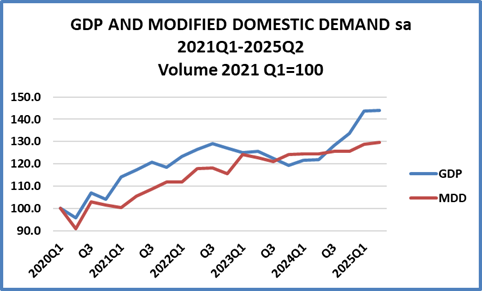
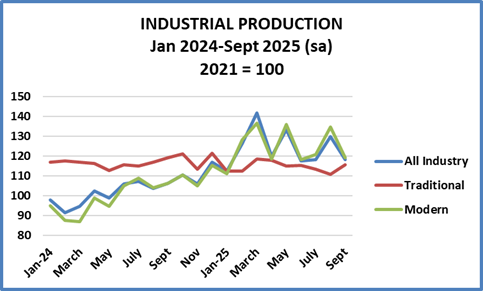
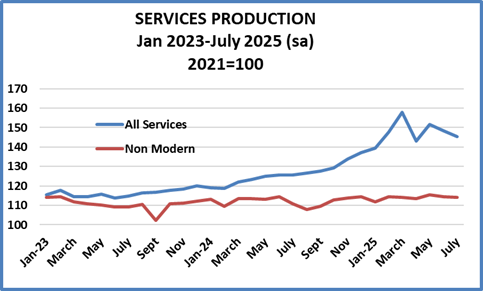
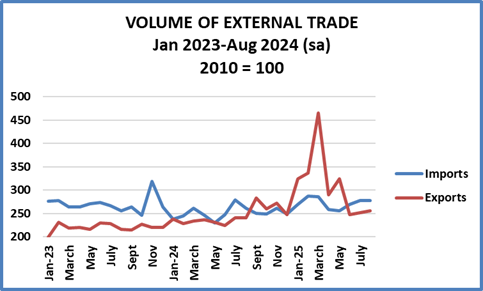
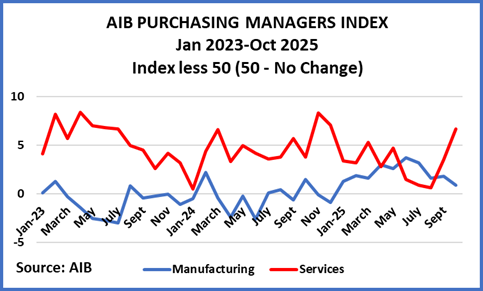
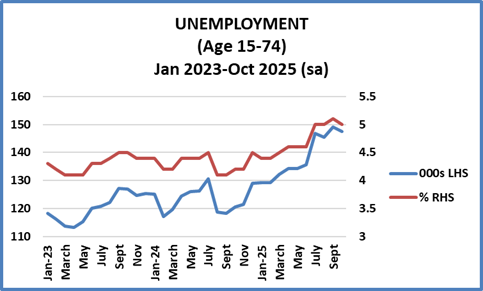
Unless noted to the contrary all graphs are based on CSO statistics.